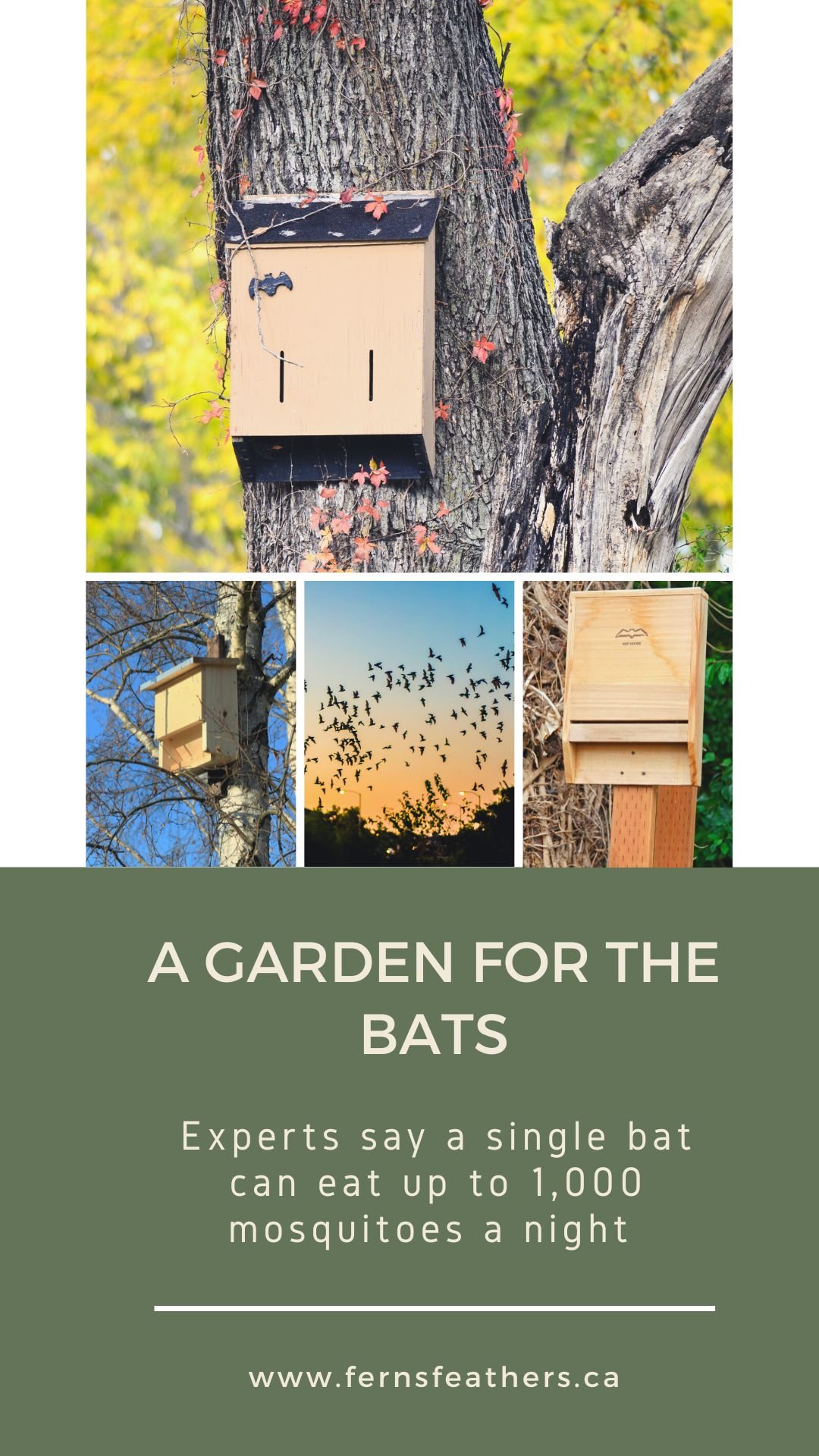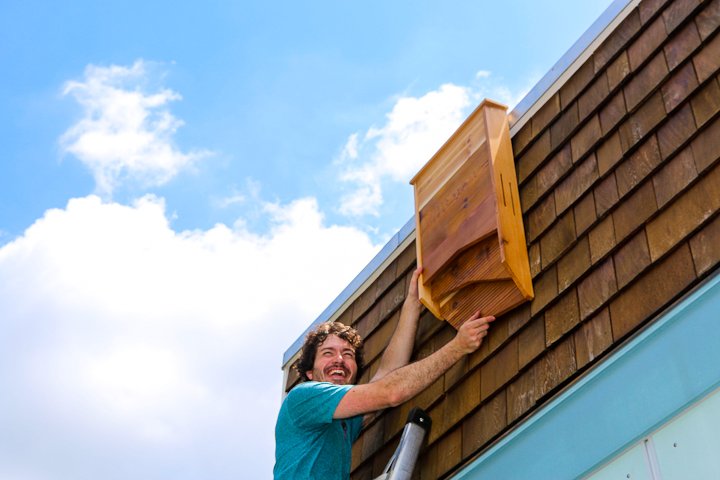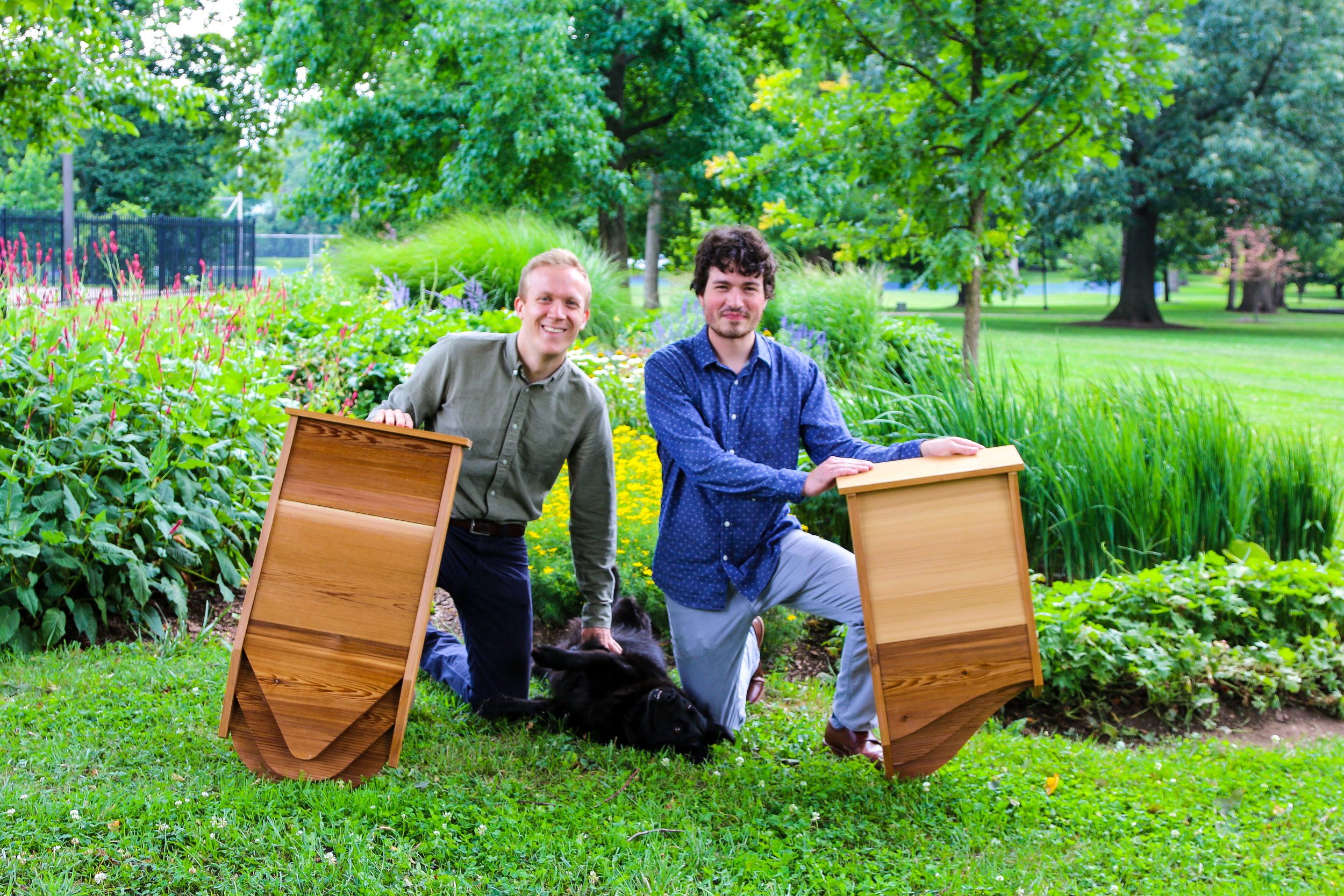Best bat house: Turn your garden into a home for Bats
Bats need help to survive and prosper?
Big Bat Box is looking to change the world, but not just any world. They want to change the world of bats. In doing so, they’ll not only be helping the bats, but the environment and especially gardeners and those who enjoy the great outdoors.
First let’s start with the bats. By creating safe homes Big Bat Box is protecting the bats’ future, how they survive and where they live.
The company is not alone. BatBnB, based in the United States is working toward the same goal.
Big Bat Box is based in Finland and is putting their expert knowledge to work as well building outstanding homes for Bats with their Big Bat Box and helping gardeners create ideal habitat for bats. Their bat houses are proving that if you build it, they will come.
Big Bat Box offers several different style homes including these Single Chamber Bat Houses.
Most important, these companies, that are committed to helping bats, want to change how humans see bats in the environment, and that includes our gardens.
These double chamber bat houses come in different styles depending on your preference. The black ones are often used to help heat the homes in cooler weather.
BatBnB, a Louisville Kentucky company, says the first step in protecting bats is to eliminate the use of pesticides and replace them with natural solutions – bats, and if they have their way, lots of them.
In fact, they want to change the minds of gardeners and convince them that every garden needs to encourage bats.
In the Woodland Wildlife garden, bats fill a niche that is often left unfilled. By bringing them into our garden we not only help improve our gardens, we also play an important role in helping these mammals recover their dwindling numbers.
BatBnB are not alone. More and more garden experts are recognizing the value of our native bats and are urging homeowners to help the bats any way they can. For some, that may mean eliminating pesticides and using more native plants in their gardens to encourage insects.
For others, putting up a large nesting box to create habitat and attract a small colony of native bats to control insects – especially mosquitoes – is the right direction.
Bat boxes are available in many styles, sizes and configurations from many different retailers ranging from specialized bird stores, to popular commercial and on-line outlets. Purchasing a high quality bat house will go a long way to provide a safe and enticing place for the bats to roost.
Placement of the house is also important.
Five tips to help Bats
• Eliminate all pesticides from your garden
• Provide a natural habitat like a woodland garden with trees, fruiting shrubs and flowers to attract insects.
• Offer evening- and night-blooming flowers as well as compost heaps that attract insects.
• Provide access to water in your garden. A fountain left on during the night is excellent but bird baths or natural ponds also work well.
• Add a high-quality bat house to the garden to provide a safe and comfortable environment for these incredible mammals.
The BatBnB team, consisting of only five fanatical bat lovers, are doing it many ways – through education about the importance of our native bats on their impressive website and by showing the world that providing a place for bats in our gardens is not only beneficial to the bats and the gardeners, but it can be done with a whole lot of style.
“We are all big bat fans and want to see these animals thrive,” says Community Manager Jessica Woodend.
To ensure they can get as many BatBnBs out into the world as possible, the small team of bat enthusiasts has partnered with a U.S.-based distributor to make and ship the stylish boxes.
Just one look at the company’s elegant bat house designs, and you would be forgiven for mistaking them for an elegant piece of garden art.
If the BatBnB houses are not to your liking, there are many bat house styles available.
One of the best is the Vundahboah Amish Goods Outdoor Bat Box Shelter with Large Double Chamber. The bat house (pictured below) is handmade from solid cedar in the United States. The cedar is not only long lasting, it will also age gracefully to a lovely shade of gray over time.
Ferns & Feathers readers are being offered a 15 per cent discount on BatBnB houses when they use the code FERN at checkout. Simply go to the BatBnB website and use the code FERN when checking out.
Education is key to bat survival
“We’re here to rewrite the narrative around one of the world’s most commonly misunderstood animals,”the company states in its website.
And it doesn’t take long to realize just how serious they are.
“Our team is on a mission to empower the conservation movement by designing products that facilitate mutually beneficial relationships between people and wildlife. In doing so we welcome a broader demographic to participate in conservation in a meaningful way. With BatBnB, we’re empowering customers to ditch pesticides in favor of a natural alternative, provide a safe home for an animal in need, and educate their communities about the benefits these amazing animals bring.”
And, in case you thought these are meaningless statements just to sell bat houses, consider that BatBnB is endorsed by leading bat expert Merlin Tuttle.
The Gold Label Bat Houses (see below) are an excellent alternative to consider. It includes shingles for added warmth and protection long-life, and has two chambers.
Expertise and commitment from the beginning
The company started in 2016 after the founders recognized the problem bats faced.
“We spent about 2 months doing our own research into the design. We then spent about 4 months working with world renowned bat biologist Merlin Tuttle, who has spent years studying what was working for bat houses and what wasn’t. Once we had the design ready, and Merlin’s seal of approval, it was about 6 months into our journey starting BatBnB,” explains Ms. Woodend.
“We’re here to rewrite the narrative around one of the world’s most commonly misunderstood animals. ”
“Merlin Tuttle has been on the forefront of bat conservation for over 60 years,” she explains. “It was very important to us that we created a product, alongside Merlin, because he knows what works and what doesn’t. I don’t think there is anyone who knows as much about bats as Merlin does, and we wanted to have a product that would help these animals. He doesn’t give his seal approval out lightly, and we are proud of the product we have that checks all of the boxes for what Merlin found in his own research.”
Mr. Tuttle writes: “The BatBnB line of houses is the first to be developed for mass sale that meets all my personal criteria. I have been involved in the design and construction of these houses from the beginning and am happy to endorse them as unsurpassed in meeting bat needs, resisting deterioration, and still looking great.”
Education at the root of BatBnB website
Visitors to the BatBnB website can get an in-depth education on the value of bats.
The company has teamed up with the the Tuttle Bat Conservation group to provide the Bat Education Zone on the website where they explain the types of insect bats love to eat (1000 mosquito-size insects an hour) including Japanese Beetles, Cucumber Beetles, mosquitoes, stink bugs, leaf hoppers and army worm moths.
Check out this link to a fun but informative YouTube video about the importance of bats.
Visitors to the site will also learn what type of bats they might be able to encourage into the bat house, where the bats live in winter (some migrate south) and why bats need our help.
For parents looking to provide important outdoor education to their children or grandchilden, the kid-friendly website includes videos and fun facts about bats. There is even a quiz at the end to test your knowledge about bats.
The company has come a long way since their beginnings.
Company founders Christopher Rännefors and architectural designer Harrison Broadhurst started with the dual-chambered designs, and the company’s Mammoth bat house, explains Ms. Woodend.
“A year later we released the single-chamber option in order to create a different price point to meet the needs of our customers.
“We have made slight modifications to the mounting apparatuses to make things easier for the consumer to install, and to shift to more eco-friendly options. Our overall structure hasn’t changed much, and that is something we take a lot of pride in. Our research paid off and we were able to offer a high quality product to the masses,” explains Rännefors.
Just how much help has the company been to the survival of bats?
“We have sold enough BatBnBs to provide a safe home for almost 1,000,000 bats! We have BatBnBs in all 50 states, and 13 countries,” he explains.
Why gardeners should attract bats?
“Bats provide some major benefits,” explains Ms. Woodend. Not only do they help control mosquito populations, but they also eat a wide range of other garden pests. Also, bats don’t typically eat bees or butterflies due to a scheduling difference, so our local pollinators are safe.”
As an added bonus, Bat guano is also a really rich fertilizer that can be used in small quantities on our gardens.
So not only are they a natural pest control, they’re a natural fertilizer with no chemicals needed. That’s a combination that is difficult to beat.
Ms. Woodend adds that there are also locations that benefit from pollination from bats. Although bats don’t get the same credit that our native bees and butterflies enjoy when it comes to pollination, bats can be important pollinators especially in tropical climates as well as deserts in the American Southwest where they pollinate agave plants as well as native cactus.
The United States Forest Service Rangeland Management Botany Program credit bats with pollinating more than 300 species of food-producing plants including cashews, bananas, peaches and figs.
Plants such as French Marigolds, Cleome, Yucca, Night-blooming phlox, Evening primrose, Fleabane, Moonflowers, Goldenrod, Nicotiana, Honeysuckle and Four o’clocks all benefit from possible pollination from bats.
If adding a moon garden of night-blooming flowers is in your plans, having bats will help ensure its success.
Bats also help spread seeds from hundreds of different plant species. Tropical fruit bats are good examples of how important seed dispersers bats can be, especially in warmer tropical climates.
Bat tips from a wildlife rehabilitator
Crystal Faye, Animal Care coordinator for Procyon Wildlife in Beeton Ontario, offers Ferns & Feathers readers some vital information about bats from years of helping injured animals or those needing a helping hand.
Here are just a few of her recommendations:
• Leaving dead trees (if safe to do so) to act as roosting spots
• Choosing native flowers that bloom late in the day or at night to attract insects bats will feed on
• Having a pond or birdbath to provide them a water source
• Don’t evict bats from structures during summer when they are raising pups. They have small litter sizes and low reproductive rates, so loss of an entire colony’s pups can really impact their population.
A few bat recommendations for anyone:
• If a bat pup falls from a roost you may be able to get it to grasp onto a broom and raise it back up to the bat house/nesting area. If given the chance it may climb back up to its colony.
• If a bat is found out of hibernation in the winter it has likely used up all its fat stores and needs help to survive. Releasing a bat outdoors in winter will cause it to die from freezing or of starvation. A bat found awake in Ontario or other cold climate during winter needs to be cared for by a licensed wildlife rehabilitator.
• Never handle a bat bare handed. Like most wild mammals they can contract and spread the rabies virus. Always wear thick gloves or use a thick towel if attempting to catch a bat.
To find a list of licensed wildlife rehabilitators in Ontario visit the Ontario Wildlife Rescue. Ontario Wildlife Rescue is a network of rehabilitators and wildlife centres across Ontario.
Why we need bats in our gardens
But what about woodland gardeners? Why should we care about bats?
In a Woodland garden, we strive to create a natural environment where everything is in check. Bats are an important part of that natural environment helping to create a balance. Bats fill a niche that few other animals can meet.
When my wife and I first moved into our home more that 20 years ago, the evening sky was filled with bats flitting about capturing their dinner in mid flight. I remember sitting out with a glass of wine just watching the little bats fly about in the openings between trees.
Mosquitoes were never really a concern at that time. West Nile didn’t exist in our area and the odd nip from a mosquito was no problem.
Life went by and working afternoons meant looking up into the evening sky became a rare endeavour available only on busy weekends. Since retirement, however, looking up into the evening sky has become an alarming exercise in futility.
No longer are bats filling the evening skies with their frenetic flights. There are still bats, but the numbers have fallen drastically. Seeing them flying about is now an exciting moment, rather than a common one.
Even in an area surrounded by acres of conservation land forests the bat population is in decline.
The result, besides the increase in the mosquito population and the inability to sit out in the evening without being attacked by a barrage of blood suckers, is the likely rise in pesticides to deal with the increasing numbers. This doesn’t include the enormous increase in electronic bug zappers that kill not only mosquitoes but every other flying insect at night including moths.
Artificial roosts help bats recover from White-Nose Syndrome
Adding to the problem is the enormous loss of bats due to White-Nose Syndrome.
According to Mr. Tuttle, “The bat-killing fungus Pseudogymnoascus destructans, that causes white-nose syndrom (WNS), has triggered the most serious wildlife disease epidemic in American history.”
The immediate goals of wildlife experts has been to try to halt the spread and find a cure for the disease.
Mr. Tuttle goes on to explain that White-Nose Syndrome “has proven unstoppable. Bats have spread it rapidly across an entire continent since 2008, killing millions of cave-hibernating species. This is extremely discouraging.
However, the most dire predictions have not come to pass, and encouraging discoveries have been made.
Bat facts from the U.S. Department of the Interior
1) There are more than 1,400 species of bats worldwide.
2) Not all bats hibernate
3) Bats have few natural predators – disease is one of the biggest threats particularly white-nose syndrome.
4) No bats mean no bananas, avocados and mangoes.
5) Night insects have the most to fear from bats.
6) Bats are the only flying mammal
7) Bats may be small, but they’re fast reaching speeds over 100 miles per hour.
8) Conservation efforts are helping bat species recover. At least 12 types of U.S. bats are endangered. In 1988, estimates of lesser long-nosed bat numbers put them at fewer than 1,000 bats at 14 roosts. There are now an estimated 200,000 bats at 75 roosts.
9) The longest living bat is 41 years old. In 2006, a tiny bat from Siberia set the world record at 41 years.
10) Not unlike cats, bats spend a lot of time cleaning and grooming their sleek fur. It also helps to control parasites.
For more interesting facts on our native bats, check out government website 13 awesome facts about Bats.
How gardeners can help bats
Merlin Tuttle’s Bat Conservation suggests the way to help bats deal with White-Nose Syndrome is to focus “on helping bats recover, (by) strictly protecting and restoring their most important hibernation sites, protecting remaining summer colonies, and providing artificial roosts.”
There is mounting evidence of a gradual recovery, when these steps have been taken.
Individual gardeners can do their part by providing natural roosting places in their gardens and by erecting specialized bat houses that help to provide habitat for these critical garden helpers.
Properly constructed and well built bat houses will go a long way in helping our local bats survive and prosper until wildlife scientists are able to wrestle WNS into submission.
The problem, however, is not going away. Efforts to stop the spread of WNS has not slowed its progression. Bats are spreading the disease themselves and cures and vaccinations are are proving impractical, according to the Tuttle Bat organization.
Individual bats can be cured of the fungus that causes WNS, but “cures do not confer immunity, so cannot prevent reinfection.”
In addition, “Widespread vaccination is cost prohibitive and could slow natural selection needed to evolve genetic resistance in future populations.”
In the meantime, all we can do is provide them with the best and healthiest environment possible.
That does not include the use of pesticides.
“Merlin Tuttle always says it best,” explains Woodend, “that the biggest threat to bats is our failure to understand them. We have made it our mission, along with providing quality bat houses, to educate the public about these misunderstood animals. Highlighting the benefits we receive from these animals, and how we can help. Not everyone has to love bats, but we do need to respect them and their role in the ecosystems we all depend on.”
Do bats carry rabies?
Probably the biggest fear of bats is the possibility of contracting rabies.
It’s important to remember that bats are already living all around us, and the chances of getting rabies from a bat is exceedingly rare.
“Like all mammals, bats can contract rabies (though often at a lower rate than other mammals like raccoons or skunks), but transmission to humans is extremely rare, with just 1-2 cases per year in the U.S. and Canada combined,” explains Ms. Woodend.
“It’s worth noting that in the majority of those cases, it was a result of a human making the mistake of touching the bat. Never do that. Bats are not pets and should never be handled. For anyone who simply doesn’t handle bats, the odds of contracting any disease are exceedingly remote,” she explains.
“Additionally, there are hundreds of thousands of bats living in bat houses across North America, and according to bat expert, Merlin Tuttle, there’s not a single recorded case of a bat house owner being harmed by a bat.
“In Austin, Texas 1.5 million bats live under the Congress Ave Bridge in the center of the city, have attracted millions of visitors to view their spectacular emergence close-up, and none has ever been attacked or contracted a disease.
BatBnB recognizes that, although contracting rabies from a bat is extremely rare, their responsibility to educate customers is vital and to make them aware that bats are “absolutely not pets.”
“If a bat is ever seen on the ground or in the home then an animal control professional should be called, and the bat should never be handled directly,” they are quick to point out.
“We don’t pretend there isn’t a risk of rabies with bats, but we also don’t want to allow over-blown scare stories in the media to prevent us from looking at the real numbers in the data that show how small a risk this is to the general population. If we didn’t, then bats would continue to be vilified, threatened, and ultimately tumble down the path of becoming endangered species.”








